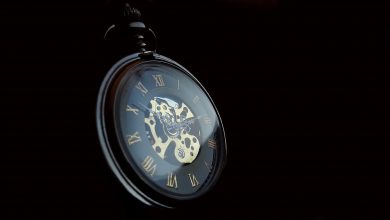Louis-Bar Syndrome: Living in Persistent Déjà Vu

Can you imagine an experience you felt you had before? This is exactly what happens in Louis-Bar syndrome.
You are in summer. While playing card games with your family on the beach, you talk about a recent event. There is a sudden feeling that you have already had the experience you are in; this is what you’re experiencing is called déjà vu. Can you imagine what it’s like to have this feeling constantly? This is exactly what those with Louis-Bar syndrome feel, a condition named after its first recorded case.
So what exactly is déjà vu? Where does it come from? How and why does it happen? Is it pathological?
What exactly is déjà vu?
This term is French and means “I’ve already seen”. We use this word colloquially when we talk about a perception anomaly called paramnesia. It is the state of feeling that you are experiencing the same thing again even though you have not experienced it before. As a result, the person feels familiar with a new situation or event. In addition, it is common to experience feelings of “strangeness” or “alienation”.
The term was first used by the French philosopher Émile Boirac in 1876. This was in an article he wrote for the same journal in response to a reader of the journal Revue Philosophique de la France et de l’Étranger claiming to be reminiscing about things that happened in his previous life. In his reply, Boirac stated that he had had the same experience: J’ai déjà vu ce que je vois (“I have already seen what I saw.”)
Psychologist Edward B. Titchener explains that déjà vu is caused by the fact that the brain momentarily sees an object or situation before it has finished “constructing” a conscious perception of experience. This is a kind of “partial perception” that manifests itself as a false sense of familiarity. However, the term déjà vu was first used in a medical sense in 1896, when the French psychologist Francois-Léon Arnaud presented the case of his patient Louis to the Medical Psychology Association.
Louis-Bar Syndrome
Louis was a 34-year-old army officer who ended his service after fighting in Vietnam. One day he began to show some rather strange symptoms. These included mixing the present with the past and being in a constant state of déjà vu.
Louis, to understand his condition, Dr. He went to the Vanves Health Center, where Francois-Léon Arnaud worked. Not surprisingly, he said that everything he saw when he first got there was familiar to him. He also stated that he is experiencing the same “feeling” he felt when he was here before. This phenomenon was known as déjà senti (I already felt it). Even when Louis saw the doctor, he was in a position to think that he should pretend he didn’t know him.
Arnaud says that Louis truly believed he was living “two parallel lives,” as if he were experiencing everything a second time, despite evidence showing that he had not been here before.
Louis-Bar syndrome from a nonpathological state of déjà vu
Déjà vu is a perfectly normal experience. In fact, it is an experience experienced by about two-thirds of the population. But chronic déjà vu is not normal; is often the result of a neurological injury. It appears that Louis’ symptoms were also caused by an illness that affected his nervous system, which he also contracted while in Vietnam.
Arnaud was the first to come close to finding a simple but effective way to distinguish whether déjà vu is normal or pathological. However, this is less common in healthy people and is temporary; You become aware that the feeling of having seen before is an illusion. In pathological déjà vu, you feel certain that you have actually experienced this experience before.
In analyzing the Louis case, déjà vu was not the most accurate diagnosis that met his condition, as this concept describes a relatively normal experience. Perhaps Louis’ symptoms pointed to recurrent paramnesia (distorted memory) or collective confabulation. This is when the brain concocts memories to fill in the gaps created by amnesia.
An obscure phenomenon
There is evidence that both types of collective confabulation and déjà vu phenomena occur in various parts of the brain. It was observed that collective confabulation occurred in the middle temporal and frontal lobes. However, other studies have shown that it is in the insula, the part of the brain that deals with sensitivity and emotions.
More neuroimaging studies are needed to observe them thoroughly. It should also become possible to create déjà vu in the laboratory environment. Yes, this sounds a bit difficult, but considering how fast progress in science is, we may find the answers we seek sooner than we think. Until then, we wish that people with Louis-Bar syndrome only have happy moments in their lives.





